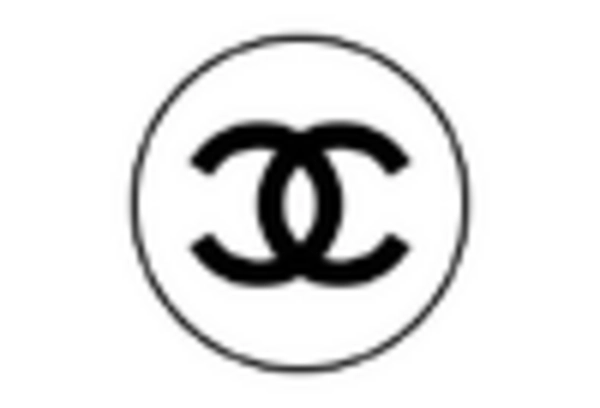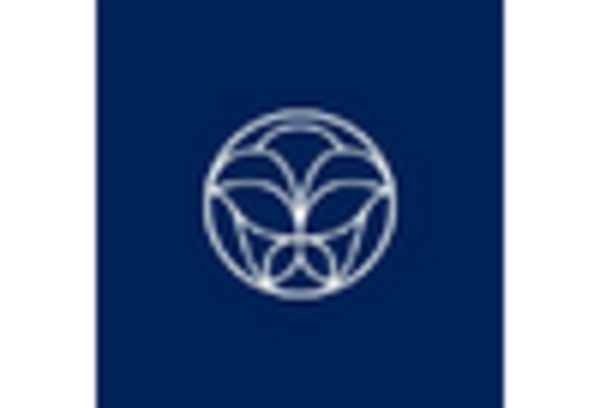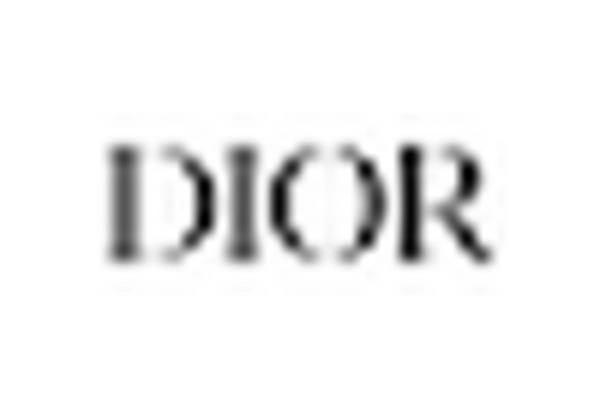Expansion of Niche and Indie Brands
The perfume fragrance market is witnessing a significant rise in niche and indie brands, which are gaining traction among consumers seeking unique and personalized scents. These smaller brands often focus on artisanal production methods and distinctive fragrance profiles, appealing to a demographic that values individuality over mass-market offerings. Market analysis suggests that niche brands could capture up to 15% of the overall market share by 2027, as consumers increasingly gravitate towards products that reflect their personal style. This trend is prompting established brands to innovate and diversify their offerings to compete with the growing presence of niche players in the perfume fragrance market.
Rising Demand for Luxury Fragrances
The perfume fragrance market experiences a notable increase in demand for luxury fragrances, driven by consumers' growing inclination towards premium products. In recent years, the market has seen a shift where consumers are willing to invest more in high-quality, exclusive scents. This trend is particularly evident among millennials and Gen Z, who prioritize brand reputation and unique olfactory experiences. According to market data, the luxury segment is projected to grow at a CAGR of approximately 5.5% through 2026, indicating a robust appetite for luxury offerings. As a result, brands are focusing on creating distinctive fragrances that cater to this affluent consumer base, thereby enhancing their market presence in the perfume fragrance market.
Technological Advancements in Fragrance Development
Technological advancements are playing a pivotal role in the evolution of the perfume fragrance market. Innovations in scent formulation and delivery methods are enabling brands to create more complex and appealing fragrances. Techniques such as molecular distillation and synthetic biology are being utilized to enhance scent profiles and improve longevity. Furthermore, advancements in digital technology allow for more efficient Market Research Future and consumer feedback analysis, enabling brands to tailor their products to meet consumer preferences. As these technologies continue to develop, they are likely to reshape the competitive landscape of the perfume fragrance market, fostering innovation and creativity.
Growing Awareness of Ingredients and Health Concerns
Consumers are increasingly aware of the ingredients used in fragrances, leading to a demand for transparency and safety in the perfume fragrance market. This heightened awareness is prompting brands to disclose their ingredient lists and avoid harmful chemicals, aligning with the preferences of health-conscious consumers. Reports indicate that approximately 40% of consumers prefer products labeled as 'natural' or 'organic,' which has led to a rise in clean beauty brands entering the fragrance sector. As a result, established brands are reformulating their products to meet these expectations, thereby influencing purchasing decisions and shaping the future landscape of the perfume fragrance market.
Influence of Social Media and Celebrity Endorsements
The impact of social media and celebrity endorsements on the perfume fragrance market cannot be overstated. Platforms like Instagram and TikTok serve as powerful marketing tools, allowing brands to reach a wider audience and engage with potential customers. Influencers and celebrities often promote specific fragrances, creating trends that resonate with their followers. This phenomenon has led to a surge in sales for endorsed products, with some brands reporting increases of up to 30% following a high-profile endorsement. The ability to create buzz and generate interest through social media campaigns is crucial for brands aiming to capture market share in the competitive perfume fragrance market.

















Leave a Comment